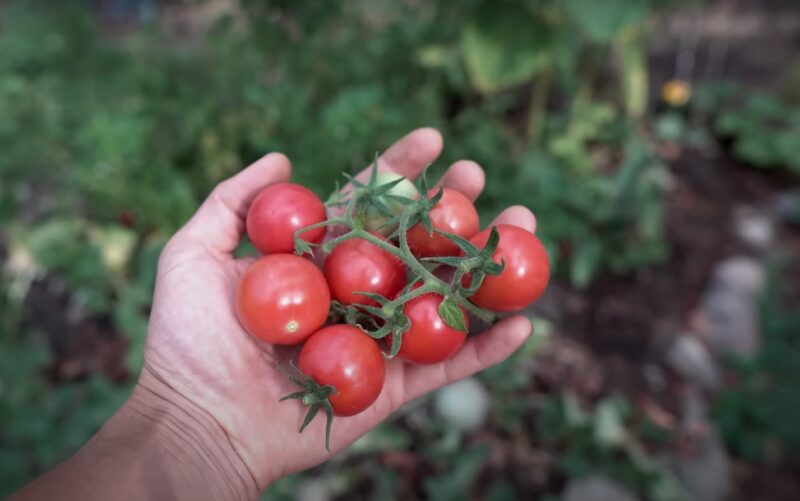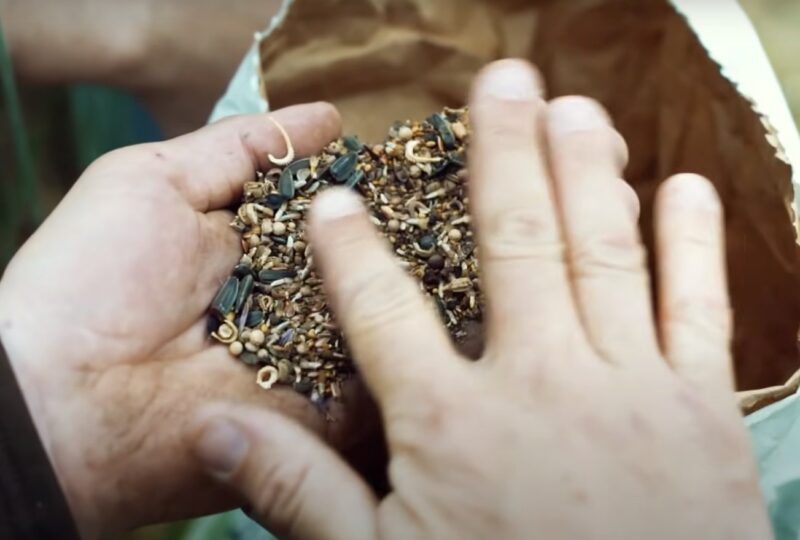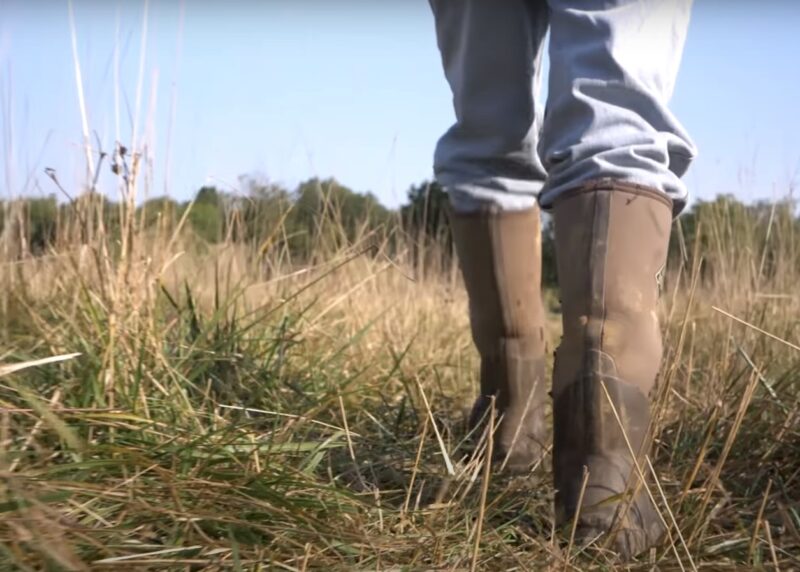Agroforestry, a practice as ancient as agriculture itself, combines elements of agriculture and forestry to create more sustainable land-use systems. This approach to using land not only enhances biodiversity and reduces erosion but also offers economic benefits to farmers and communities.
Historically, agroforestry practices have been integral to rural livelihoods across the globe, allowing for the simultaneous cultivation of crops and trees on the same plot of land.
Today, as we face pressing environmental challenges, the relevance of agroforestry has only increased, offering a path toward more sustainable agricultural practices that can help address issues like deforestation, soil degradation, and biodiversity loss.
[su_note note_color=”#ededed”]
Key Takeaway:
- Agroforestry is an ancient practice that has evolved to address contemporary environmental challenges.
- Each practice is designed to leverage the synergistic relationships between trees, crops, and livestock, demonstrating agroforestry’s adaptability to different environmental and socio-economic contexts.
- Agroforestry practices yield significant ecological benefits, such as enhanced biodiversity, improved soil health, and carbon sequestration.[/su_note]
Commonest Agroforestry Practices

Several practices are commonly implemented in agroforestry, each with its unique set of benefits:
| Agroforestry Practice | Description |
|---|---|
| Taungya System | Originating in Myanmar, this practice involves growing crops within forest plantations. Farmers cultivate agricultural crops during the early stages of forest development, which provides additional income while the trees mature. |
| Alley Cropping | This practice involves growing crops in the spaces between rows of trees or shrubs, which can provide wind protection, improve soil moisture retention, and enhance biodiversity. |
| Forest Farming | By cultivating high-value crops under the canopy of an existing forest, farmers can harvest both traditional forest products and agricultural crops, diversifying their income sources. |
| Windbreaks and Shelterbelts | Planting rows of trees or shrubs around agricultural fields reduces wind speed, protects crops, conserves soil moisture, and can even modify the microclimate to benefit crop growth. |
| Riparian Buffers | These are strips of vegetation planted along waterways to prevent soil erosion, filter pollutants, and provide wildlife habitat. |
| Living Fences | Utilizing trees and shrubs as boundary markers or livestock barriers not only defines property lines but also contributes to biodiversity and can provide additional products like fruit or timber. |
| Shade-Grown Crops | Cultivating crops under the partial shade of tree canopies, such as in coffee or cocoa agroforestry systems, can improve product quality and environmental sustainability. |
Core Principles of Agroforestry

At its core, agroforestry is about harnessing the synergistic relationships between trees, crops, and, in some cases, livestock. This integration aims to create a system that is more than the sum of its parts, yielding multiple benefits.
Ecologically, agroforestry practices enhance soil health, increase biodiversity, and improve water management through natural processes such as nitrogen fixation, shade provision, and organic matter addition.
Economically, these systems can diversify income sources for farmers by providing various products such as timber, fruit, and fodder, in addition to traditional crops.
Socially, agroforestry contributes to food security and supports rural livelihoods by offering more resilient farming systems that can withstand the impacts of climate change and reduce dependence on external inputs.
Types of Agroforestry Systems
Agroforestry encompasses a variety of systems, each tailored to specific environmental and socio-economic contexts. These systems can be broadly categorized into three types:
Silvoarable Systems (Agrisilvicultural)
Silvoarable systems combines the cultivation of crops with the management of trees on the same land. It’s designed to optimize land use and increase biodiversity. Alley cropping, where crops are grown in rows between trees or shrubs, and forest farming, which involves cultivating shade-tolerant crops under the canopy of trees, are prime examples.
These practices not only enhance crop diversity and productivity but also contribute to soil conservation and wildlife habitat creation.
Silvopastoral Systems
Silvopastoral Systems integrate trees with pasture and livestock, offering multiple benefits such as providing shade and shelter for animals, improving pasture quality, and enhancing biodiversity.
Examples include grazing livestock in wooded pastures or using living fences made of trees or shrubs to contain animals. Silvopastoral systems can lead to healthier livestock, reduced feed costs, and improved land management.
Agrosilvopastoral Systems
Combining crops, livestock, and trees in a single system represents a holistic approach to land use that maximizes the benefits of both silvoarable and silvopastoral systems. This integration can significantly improve land productivity, enhance biodiversity, and offer robust solutions to environmental challenges like erosion and habitat loss.
Benefits of Agroforestry
Agroforestry practices offer a plethora of benefits that span environmental, economic, and social spheres, making them an integral part of sustainable land management strategies.
Environmental Benefits
One of the most significant advantages of agroforestry is its positive impact on the environment. By integrating trees with crops and/or livestock, agroforestry systems can enhance biodiversity, both above and below ground. This diversity contributes to the resilience of ecosystems, enabling them to better withstand pests, diseases, and climate variability.
Moreover, trees play a crucial role in soil health, preventing erosion, improving water infiltration, and increasing the organic matter content, which in turn enhances soil fertility. Additionally, agroforestry practices contribute to carbon sequestration, helping mitigate climate change by capturing atmospheric carbon dioxide in biomass and soil.
Economic Benefits
Agroforestry systems can also offer significant economic benefits to farmers and communities. By diversifying farm products, such as timber, fruit, nuts, and fodder, alongside traditional crops or livestock, farmers can tap into multiple income streams, reducing their vulnerability to market or climatic fluctuations.
This diversification also allows for more efficient use of land and resources, potentially increasing overall productivity and profitability. Furthermore, many agroforestry products have high market value, especially organic and sustainably harvested goods, opening up additional economic opportunities.
Social Benefits
Beyond environmental and economic advantages, agroforestry practices contribute to social well-being. They play a vital role in food security by providing a variety of food products, reducing reliance on single crop monocultures, and ensuring a steady supply of food resources throughout the year.
Agroforestry also supports rural livelihoods, offering employment opportunities and enhancing the sustainability of agricultural practices. Additionally, these systems can have cultural significance, preserving traditional knowledge and practices while fostering a connection to the land.
Challenges and Considerations

While agroforestry holds the promise of transforming agricultural landscapes into more sustainable and productive systems, its implementation is not without challenges. One of the primary hurdles is the knowledge gap that exists among farmers and landowners about agroforestry practices and their myriad benefits.
This lack of awareness can lead to hesitation in adopting these practices, as the perceived risks and uncertainties overshadow the potential rewards. Initial investment costs pose another significant barrier. Establishing agroforestry systems often requires upfront expenditures for planting materials, infrastructure, and possibly land modifications.
For smallholder farmers operating on tight margins, these costs can be prohibitive without external support or incentives. Additionally, the transition to agroforestry may necessitate specialized training to manage the complexities of integrated systems effectively.
This training is not always readily accessible, further complicating the adoption process. The intrinsic complexity of agroforestry systems, which seamlessly blend agriculture, forestry, and sometimes livestock, demands a nuanced understanding of ecological interactions.
Farmers must navigate the challenges of managing diverse species with varying needs and growth cycles, ensuring that the system’s components coexist harmoniously. This complexity requires careful planning, ongoing management, and a willingness to adapt practices based on observations and outcomes.
FAQs
What are the agroforestry practices in India?
In India, common agroforestry practices include the Taungya system, silvopastoral systems, home gardens, and social forestry, integrating trees with crops and livestock to enhance biodiversity, improve soil health, and support livelihoods.
Where is agroforestry most used?
Agroforestry is widely used in tropical regions, including parts of Africa, Asia, and Latin America, where it helps to maximize land use efficiency, enhance food security, and provide environmental benefits.
Which is the oldest known agroforestry practice?
The Taungya system is among the oldest known agroforestry practices. It involves growing agricultural crops alongside forest plantations, allowing farmers to cultivate land within forested areas.
Which tree is best for agroforestry?
The best tree for agroforestry depends on the specific goals, climate, and soil conditions of the area. Fast-growing, nitrogen-fixing trees like Leucaena leucocephala, fruit trees, and timber species such as teak and mahogany are commonly used in various agroforestry systems.
The Bottom Line
Agroforestry stands at the intersection of agriculture and forestry, offering a suite of practices that can enhance the sustainability of land use. By delivering environmental, economic, and social benefits, agroforestry practices represent a holistic approach to managing agricultural landscapes.
Agroforestry offers a proven path to sustainable land management that can support productive agriculture, preserve biodiversity, and contribute to climate change mitigation. With the right support and adoption strategies, agroforestry can play a pivotal role in shaping a more sustainable and resilient agricultural future.
